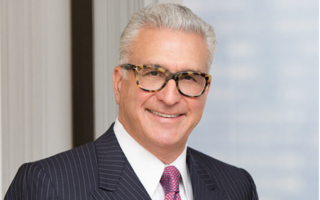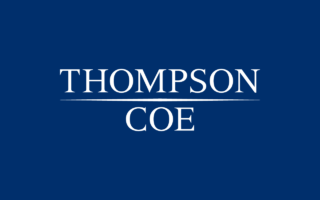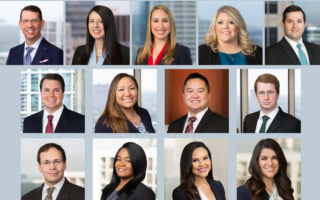Avoiding Malpractice: Conflicts of Interest in Bankruptcy Representations
May 17, 2001
I. INTRODUCTION
In grievance and legal malpractice proceedings, alleged conflicts of interest are among the most common, and often the most troublesome, claims. This is particularly true in bankruptcy representations. In fact, a recent survey of 80 percent of all bankruptcy judges concluded that conflicts of interest issues are “prevalent” in bankruptcy practice. Marie Leary, FJC Survey on Attorney Ethics Finds Most Judges Satisfied With Rules, 19-FEB Am. Bankr. Inst. J. 17 (2000).
In addition to the risk of denial or ordered forfeiture of fees under the Bankruptcy Code, the Texas Supreme Court’s recent opinion in Burrow v. Arce, 997 S.W.2d 229 (Tex. 1999), recognizes a fee disgorgement claim against attorneys for breach of fiduciary duty, including conflicts of interest, even when no actual damage can be shown. This recent development has lent fuel to the legal malpractice fire, as it opens every aspect of a representation to an after-the-fact “conflicts check,” judging legal representation against a requirement of “absolute and perfect candor, openness and honesty, and the absence of any concealment or deception.” Perez v. Kirk & Carrigan, 822 S.W.2d 261, 265 (Tex. App. – Corpus Christi 1991, writ denied).
Legal malpractice claims, breach of fiduciary duty claims, and grievance complaints arising from conflicts of interest can be avoided by understanding of the identity of the client, the duties owed to the client and to third parties, the issues that give rise to potential conflicts in the bankruptcy context, and the required disclosures and permissible waivers.
II. THE STANDARDS
Beyond good conscience and high morals, there are several sources of guidance for a lawyer’s professional conduct. Conflict of interest issues are evaluated and resolved under the applicable disciplinary rules and under the Bankruptcy Code itself. Because the crux of this article is the identification and avoidance of conflicts of interest that might give rise to a legal malpractice or breach of fiduciary duty, this article focuses on the conflict analysis in the cases cited, regardless of whether the issue arose in a disqualification proceeding, a malpractice action, or in the approval of employment or fees by a bankruptcy court.
A. The Disciplinary Rules
1. The Model Code and The Model Rules. The ABA Model Code of Professional Responsibility (the “Model Code”) and the ABA Model Rules of Professional Conduct (the “Model Rules”) set forth the ABA’s minimum standards for a lawyer’s conduct. Although a majority of states have replaced the Model Code with the Model Rules as the applicable standard for attorney conduct, courts continue to look to both standards in evaluating conflict issues. City of El Paso v. Salas-Porras Soule, 6 F.Supp.2d 616, 620 (W.D. Tex. 1988).
The Model Rules address conflicts of interest in the context of preserving client confidences, required disclosures, and competing interests. For example, Model Rule 1.7(b) provides for the disqualification of an attorney where a representation may be “materially limited by the lawyer’s responsibilities to another client or to a third person, or by the lawyer’s own interests.” However, the rule permits an attorney to take on or continue the representation if the attorney “reasonably believes” that the client’s interests will not be harmed, and if the client consents. In bankruptcy representations, this last contingency should be amended to read “if the client and the bankruptcy court consent.”
2. Appearance of Impropriety. With respect to conflict issues, one of the most notable differences between the Model Code and the Model Rules is the absence in the Rules of any prohibition against “even the appearance of impropriety,” a subjective standard originally set forth in the Model Code. Even so, result-oriented courts continue to rely on this analysis in evaluating conflicts. See, e.g., City of El Paso v. Salas-Porras Soule, 6 F. Supp.2d 616, 625, n. 10 (W.D. Tex. 1998)(“Although the Model Code does not specifically address conflict of interest concerns involving former clients, it does require an attorney to preserve the confidences of his client and to avoid even the appearance of impropriety.”)
3. The Texas Disciplinary Rules of Professional Conduct. Typically, federal district courts adopt the standard of conduct adopted by the highest court in the state; in turn, bankruptcy courts follow the standard of conduct adopted by the referring district courts. 28 U.S.C. §151. In Texas, attorneys’ conduct is governed by the Texas Disciplinary Rules of Professional Conduct (“TDRPC”). Generally, the TDRPC follow the Model Rules; however, there are significant departures. Pertinent differences are mentioned herein.
4. Disciplinary Rules Create No Cause of Action. Both the TDRPC and the Model Rules explicitly disclaim an intention to create a cause of action against attorneys who fail to meet the ethical standards. “These rules do not undertake to define standards of civil liability of lawyers for professional conduct. Violations of a rule do not give rise to a private cause of action nor does it create any presumption that a legal duty to a client has been breached.” TDRPC, Preamble: Scope 15; see also, Model Rules, Preamble 6.
Texas courts have consistently agreed with these disclaimers. “While private persons can file complaints based on violations of the rules, the only party who has standing to enforce these rules is the State Bar. Accordingly, we overrule [plaintiff’s] second point of error to the extent that it asserts the existence of a private right of action for a violation of State Bar Rules.” Home Advantage, Inc. v. Shaw, Bailey & Shaw, P.C., No. 07-97-0309-CV, 1998 WL 487042, at *3 (Tex.App. — Amarillo Aug. 19, 1998, no writ history)(not designated for publication); see also, Martin v. Trevino, 578 S.W.2d 763, 770 (Civ.App. — Corpus Christi 1978, writ ref’d n.r.e.)(violations of the Code of Professional Responsibility do not give rise to a private cause of action).
5. Disciplinary Rules Are Used for Guidance. Even though ethics rules will not be used to create a cause of action, expert witnesses in legal malpractice cases regularly testify that the TDRPC represent the applicable standard of care for an attorney practicing in Texas. In a procedural disqualification case, the Texas Supreme Court approved the practice of referring to the rules for guidance, even after noting that the rules were not intended to set a standard for procedural decisions. In re Meador, 968 S.W.2d 346, 350 (Tex. 1998); see also, Anderson Producing Inc., v. Koch Oil Co., 929 S.W.2d 416, 421 (Tex. 1996)(TDRPC establish standard of attorney conduct and can be used for guidance in procedural disqualification determinations).
B. National Standards
The 5th Circuit has held that, at least in disqualification proceedings, “national standards,” including the Model Rules, local court rules, and case law, as well as the TDRPC, should be applied in a conflicts analysis. In re Dresser Indus., Inc., 972 F.2d 540, 543 (5th Cir. 1992); accord, In re American Airlines, Inc., 972 F.2d 605, 610 (5th Cir. 1992); see also, FDIC v. United States Fire Ins. Co., 50 F.3d 1304, 1312 (5th Cir. 1995)(holding that numerous ethical rules are relevant to a federal inquiry regarding the disqualification of counsel).
C. Bankruptcy Rules
Conflicts of interest rules are examined more rigorously in the bankruptcy context, most often with respect to professionals retained in business bankruptcy proceedings. Conflicting interests are inevitable in such cases, in which multiple parties compete for the same limited dollars. Often, the “guidelines” set forth in the various disciplinary rules are so broad that they are of little assistance in evaluating the propriety of a bankruptcy representation. Even under the provisions of the Bankruptcy Code, however, the cases reflect the fact intensive nature of a conflicts analysis.
1. 11 U.S.C. § 327. Section 327 of the Bankruptcy Code provides a heightened standard in evaluating conflicts, and is written to protect debtors, and their creditors, from attorneys whose interests conflict with the bankruptcy estate. § 327(a) includes dual requirements: an attorney employed by the Trustee “must not hold or represent an interest adverse to the estate,” and further, must be “disinterested.” 11 U.S.C. § 327(a). See 11 U.S.C. § 101(14)(E)(1994)(defining “disinterested person”); see also, In re Red Lion, Inc., 166 B.R. 296, 298 (Bankr. S.D. Tex. 1994)(emphasizing that § 327 contains dual requirements). The Bankruptcy Code requirements of disinterestedness and absence of adverse interest are intended to avoid divided loyalties and to ensure the fulfillment of fiduciary duties.
2. Bankruptcy Code Enforcement. The Code enforces adherence to the “disinterested” and no adverse interest requirements with the threat of denial of compensation for a professional who is not disinterested, or who holds or represents an interest that is adverse to the estate. 11 U.S.C. § 328(c); 11 U.S.C. § 1103(b). The allowance or disallowance of fees is an issue that rests within the discretion of the bankruptcy court. These determinations can be made at the time employment is approved, or even after the fact, on a court’s own motion or when the attorney seeks court approval of compensation for services previously rendered
In terms of the reasonableness of fees charged, the Fifth Circuit has held, however, that the bankruptcy court’s prior approval of the terms of an engagement pursuant to § 327 constitutes a finding that those terms are reasonable. Matter of National Gypsum Co., 123 F.3d 861 (5th Cir. 1997). Therefore, the bankruptcy court’s review of an attorney’s final fee application is limited to whether any subsequent unanticipated, or previously unknown circumstances or events affected the reasonableness of the agreement.
3. Actual Versus Potential Conflicts Under the Bankruptcy Code. Section 327 of the Bankruptcy Code clearly prohibits attorneys from representation where an actual conflict of interest exists. Potential conflicts, however, are a different question. While some courts have held that even a potential conflict will disqualify an attorney from a bankruptcy representation, other courts have applied a more liberal standard. Compare In re Kendavis Indus. Int’l., 91 B.R. 742, 754 (Bankr. N.D. Tex. 1988)(all conflicts are actual and potential conflicts do not exist) with In re Global Marine, Inc., 108 B.R. 998, 1004 (Bankr. S.D. Tex. 1987)(attorney may be disqualified only for actual conflicts) and In re S.I. Acquisition, 58 B.R. 454, 462 (Bankr. W.D. Tex. 1986)(equity justified joint representation of affiliated entities). Unfortunately, the plethora of cases that discuss the distinction between actual and potential conflicts in evaluating an attorney’s bankruptcy representation provides little guidance beyond demonstrating the fact intensive nature of a conflicts analysis in every circumstance. Whether an identified conflict is actual or potential, full disclosure is required under the Bankruptcy Code and Rules.
4. Best Interests of the Estate. There is some limited authority holding that 11 U.S.C. § 105, which provides bankruptcy courts with the discretionary power to enter orders “necessary or appropriate” to carry out the purposes of the Bankruptcy Code, permits courts to deviate from the requirements of § 327, particularly in smaller bankruptcy cases. In re PHM Credit Corp., 110 B.R. 284, 288 (Bankr. E.D. Mich. 1990). In this regard, various factors have impacted a conflicts analysis, including:
-
- the debtor’s ability to reorganize;
-
- the economic effect of disqualifying counsel;
-
- the likelihood that a potential conflict will materialize or develop to the point that disqualification would be required in the future;
-
- fairness and equity. See, e.g., In re O’Conner, 52 B.R. 892, 897 (Bankr. W.D. Okla. 1985).
Despite these cases, the majority of courts addressing the issue have held that § 105 cannot be used to circumvent the clear prohibitions set forth in § 327. In re Palm Coast, 101 F.3d 253 (2nd Cir. 1996); In re Middleton Arms, 119 B.R. 131 (Bankr. M.D. Tenn. 1990).






